√無料でダウンロード! y=(x-1)(x-2)/√x find dy/dx for the following function 333992
Welcome to Sarthaks eConnect A unique platform where students can interact with teachers/experts/students to get solutions to their queries Welcome to Sarthaks eConnect A unique platform where students can interact with teachers/experts/students to get solutions to their queries Students (upto class 102) preparing for All Government Exams, CBSE Board Exam, ICSE Board Exam, State Board Exam, JEE (MainsAdvance) and NEET can ask questions from any subject and get quick answers byThis problem has been solved!

Find Dy Dx Y X X 1 X Brainly In
Y=(x-1)(x-2)/√x find dy/dx for the following function
Y=(x-1)(x-2)/√x find dy/dx for the following function-Separation of variables is restricted to partial differential equations You have written down an ordinary differential equation Incidentally it can be written in a simpler form dy/dx =c/yCalculus questions and answers For The Following Exercises, Find Dy/dx For The Given Functions Y = X^2 Sec X 1 Question For The Following Exercises, Find Dy/dx For The Given Functions Y = X^2 Sec X 1
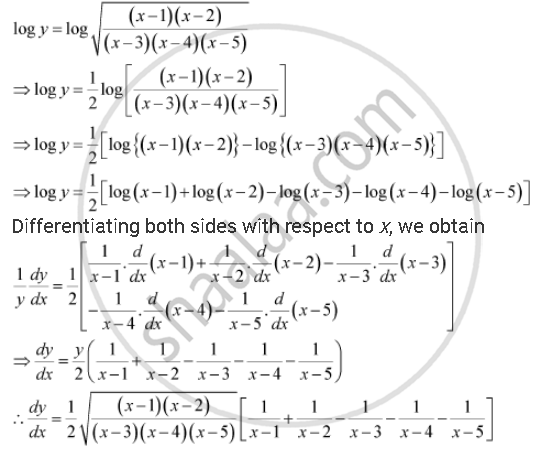



Differentiate The Function With Respect To X Sqrt X 1 X 2 X 3 X 4 X 5 Mathematics Shaalaa Com
Consider the differential equation dy/dx = x 2y, with initial condition y(0) = 2 Use Euler's method with four steps to estimate y when x=1 Calculus Consider the differential equation dy/dx = x^2(y 1) Find the particular solution to this differential equation with initial condition f(0) = 3 I got y = e^(x^3/3) 2 If y = sin^1(x√(1 x) √x√(1 x^2)) and 0 < x < 1, then find dy/dx asked in Mathematics by Samantha ( 3k points) continuity and differntiabilityTo ask Unlimited Maths doubts download Doubtnut from https//googl/9WZjCW If `x^y=y^x`,then find` dy/dx`
Find the derivative, dy/dx, for the following functions x^2y^4=lnx 3y y=ln(2x^2 1) y=ln(√x) y= lnx/x y= x^2 lnx y= Answered by a verified Tutor We use cookies to give you the best possible experience on our websiteHomework Equations The Attempt at a Solution#1 A cubic polynomial function f is defined by f(x) = 4x^3 ax^2 bx k where a, b and k are constants The function f has a local minimum at x = 1, and the graph of f has a point of inflection at x= 2 a) Find the values of
Calculus Find dy/dx y=1/ (x^2) y = 1 x2 y = 1 x 2 Differentiate both sides of the equation d dx (y) = d dx ( 1 x2) d d x ( y) = d d x ( 1 x 2) The derivative of y y with respect to x x is y' y ′ y' y ′ Differentiate the right side of the equation Tap for more stepsThis preview shows page 169 174 out of 2 pages Find the derivative of the function f ( x ) = 1 x 2 6 Solution 615 By the Reciprocal Rule, we have f ( x ) = d dx ( x 2 6) ( x 2 6) 2 = 2 x ( x 2 6) 2 154 The derivative rules we have learned can be summarized as follow (1Wolfram Alpha gives which looks a lot more likely to me to be correct than the other answer provided so far (which includes a pretty elementary error in the
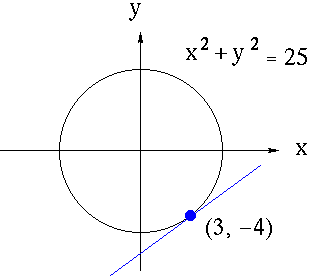



Implicit Differentiation



Secure Media Collegeboard Org Digitalservices Pdf Ap Ap16 Calculus Q4 Pdf
Calculus Volume 1 For the following exercises, find d y d x for the given functions 175 y = x 2 − sec x 1 more_vert For the following exercises, find d y d x for the given functions 175 y = x 2 − sec x 1 close In the following exercises, graph the function then use a calculator or a computer program to evaluate the follClick here👆to get an answer to your question ️ If y = x^4 x^2 1/x^2 √(3)x 1 and dy/dx = ax b then the value of a b is equal to Join / Login > 11th > Applied Mathematics > Differentiation > Rules of differentiation Find the derivative of the following functionAnswer to Find the derivative of the function y = x^3/x 1




If Y Sin 1 Sqrt 1 X Sqrt 1 X 2 Find Dy Dx
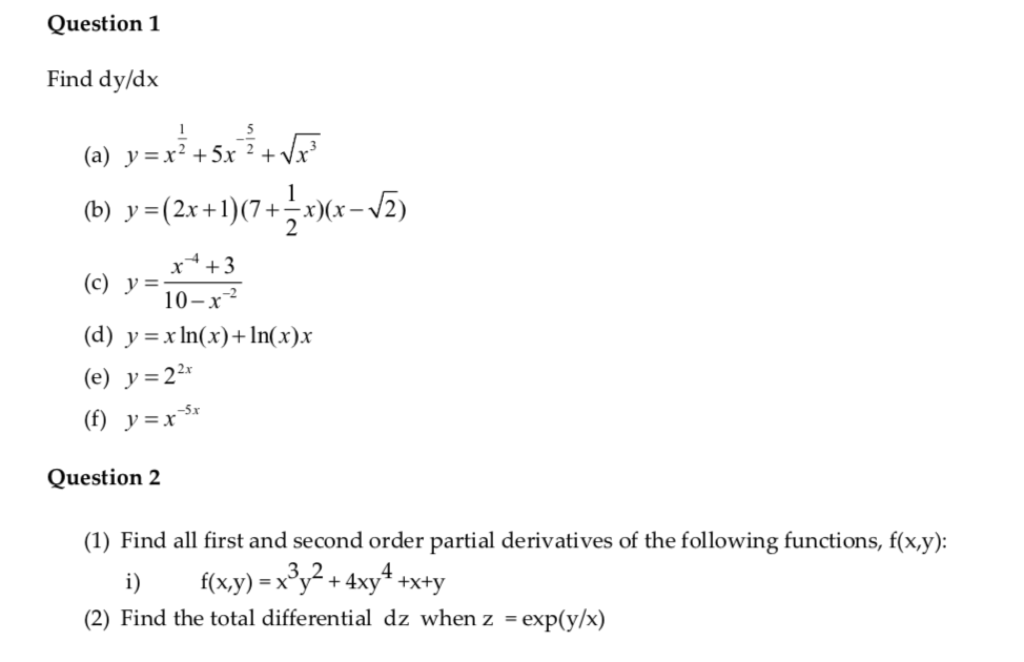



Question 1 Find Dy Dx A Y X 3x Ver B Chegg Com
This is the Solution of Question From RD SHARMA book of CLASS 12 CHAPTER DIFFERENTIAL EQUATIONS This Question is also available in R S AGGARWAL book of CLASS Hello, please guys help me find the complement of each of the following angles 46°30 (ii) 52°43'''and Guys Please Tell me how ° Come On (I) Qu estion 46°30 please explain pleaseDon't write unnecessary Answer otherwise I report Find the derivative, dy/dx, for the following functions a x^2y^4= ln x 3y b y= ln(2x^21) c y=ln(sqrt x) d y= ln x/x e y= x^2 ln x f y= log2(3x) 2 A popular search engine is targeting European countries where the number of online households is expected to grow at a steady rate Data was taken over time, and it was found that the number of online houses (in
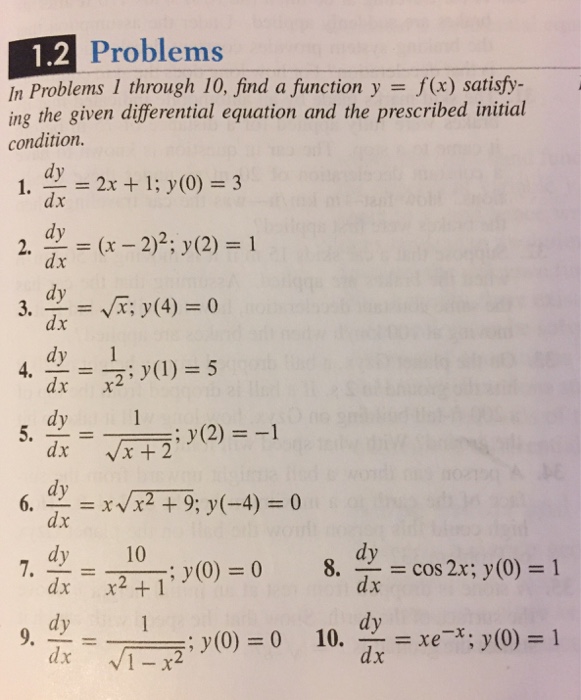



Find A Function Y F X Satisfying The Given Chegg Com




If Y Sqrt 1 X 1 X Find Dy Dx And Prove That 1 X 2
Y = √(x^21) Take y = √u where u = x^2 1 dy/dx = (dy/du)(du/dx) by chain rule dy/dx = (1/2√u) (2x) So, dy/dx = x /√(x^2 1)Write the composite function in the form f(g(x)) Identify the inner function u=g(x) and the outer function y=f(u) Then find the derivative dy/dx y=√sinx √ is square root trig Find a numerical value of one trigonometric function of x if secxcotx=4 Acscx=1/4 bsecx=4 csecx=1/4 dcscx=4X5 or 3x2 a)x5 b)3x2 c)They are equal 2 qual d)cannot be determined 2 from the following figure find ML ABC A 60 B find the value
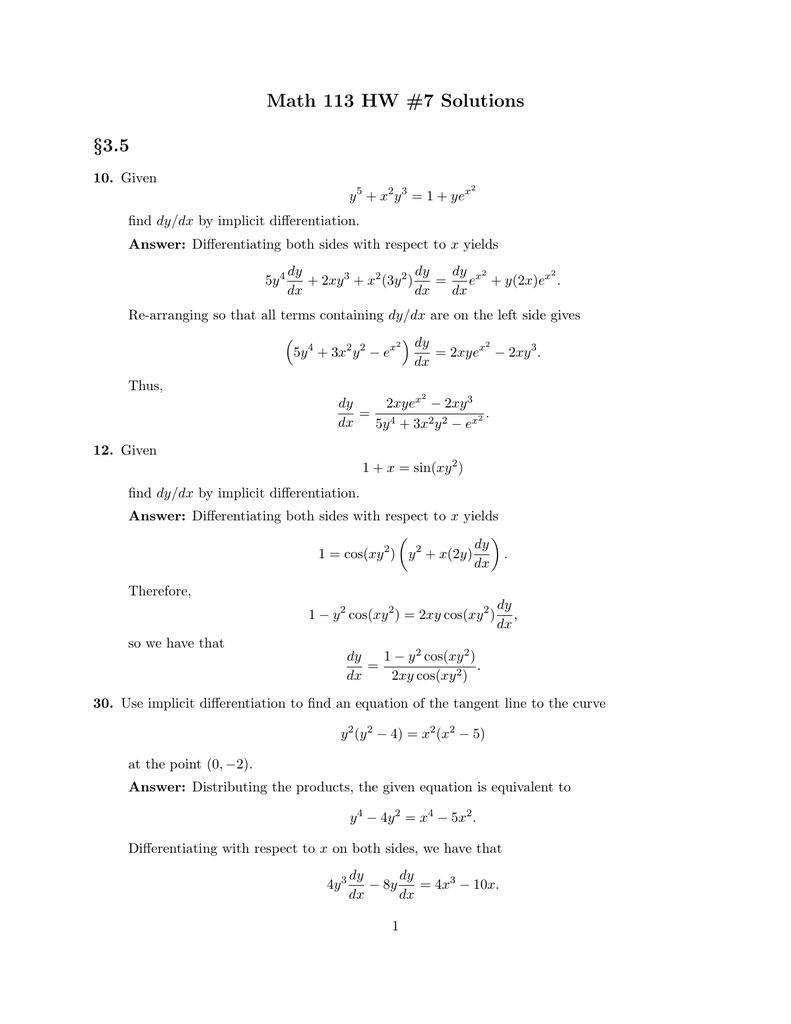



Math 113 Hw 7 Solutions 3 5
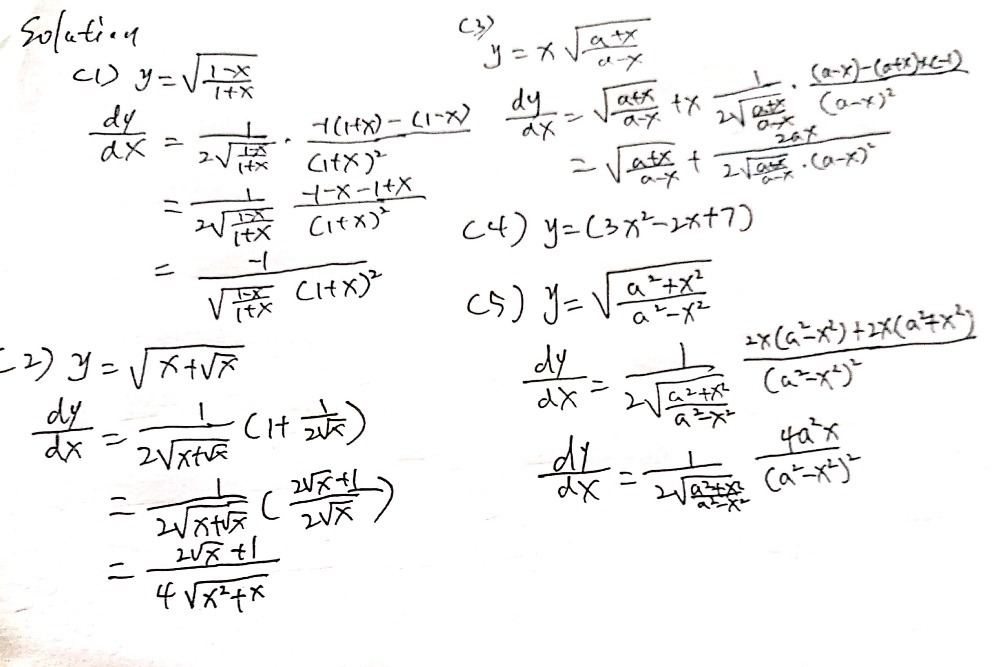



Da Dx Du X X2 1 X Exercise 2 4 1 Find Dy Dx B Gauthmath
The solution of the differential equation dy/dx = (x^2 xy y^2)/x^2, is asked May in Differential Equations by Rachi (296k points) differential equations;View Notes Standard Integralsdocx from MATH 111 at University of Liverpool Standard Integrals Example 1 Given that y=arcsin x , find dy dx in terms of Exercise 1 For each of the followingFind dy/dx y = square root of x y = √x y = x Use n√ax = ax n a x n = a x n to rewrite √x x as x1 2 x 1 2 y = x1 2 y = x 1 2 Differentiate both sides of the equation d dx (y) = d dx (x1 2) d d x ( y) = d d x ( x 1 2) The derivative of y y with respect to x x is y' y ′ y' y




Rd Sharma Class 12 Maths Solutions Chapter 11 Differentiation



Q Tbn And9gcrjyj1h2sjaozsvy L4jyifynk3 Eun Ykxdmvncbbxd1k3jim Usqp Cau
Example 9 Find the general solution of the differential equation 𝑑𝑦/𝑑𝑥= (𝑥1)/ (2−𝑦) , (𝑦≠2) 𝑑𝑦/𝑑𝑥= (𝑥 1)/ (2 − 𝑦) , (𝑦≠2) (2 − y) dy = (x 1) dx Integrating both sides ∫1 〖 (2−𝑦)𝑑𝑦=〗 ∫1 (𝑥1)𝑑𝑥 2y − 𝑦^2/2 = 𝑥^2/2 x c 〖4𝑦 − 𝑦〗^2/2 = (𝑥Click here👆to get an answer to your question ️ If y = √(x) 1√(x), then dydx at x = 1 is Find the derivative of the following functions form first principle Easy View solution If 1 − x 2 1 − y 2 = a (x − y), then show that d x d y = 1 − x 2 1 − y 2 Medium View solution FindQuestion Find dy/dx if xy^2 xy^2 e^y 3x= x^3 Find the equation of the tangent line at x = 0 for the function f(x




If Y 1 X 2 X 1 Y 2 1 Prove That Dydx 1 Y 21 X 2




Ex 5 7 1 Find Second Order Derivatives Of X2 3x 2
Solve the differential equations xdy ydx = √(x^2 y^2)dx asked in Differential Equation by PritiKumari ( 491k points) differential equations Homework Statement rewrite the equation in the form of linear equation Then solve it (1x^2)dy/dx xy = 1/ (1x^2) the ans given is y= x/ (1x^2) C / ( sqrt rt (1x^2) ) , my ans is different , which part is wrong ?Y = e u ⇒ du dx = cos x and dy du = e u Therefore, dy dx = dy du × du dx = cos xe u = e sin x cos x Example 8410 Find dy dx given y = x 2 e x Solution dy dx = x 2 e x e x (2 x) = x 2 e x 2 xe x = xe x (x 2) 85 Hyperbolic Functions The hyperbolic functions are a combinations
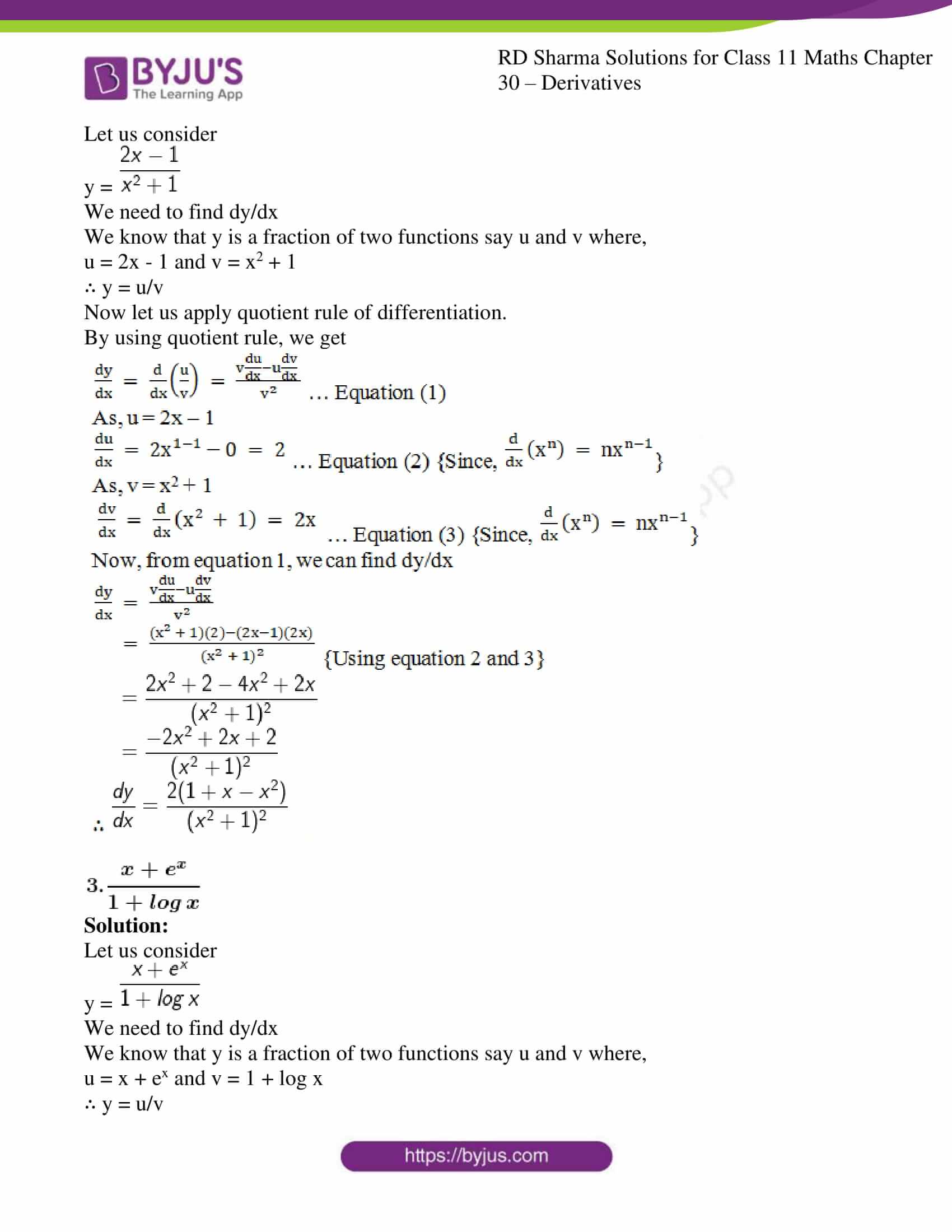



Rd Sharma Solutions For Class 11 Maths Updated 21 22 Chapter 30 Derivatives Download Free Pdf
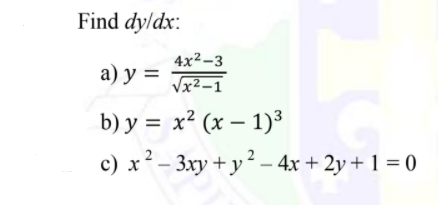



Answered Find Dy Dx 4x 3 A U 3d Vx2 1 B Y Bartleby
Find dy/dx y^2=1/(1x^2) Differentiate both sides of the equation Differentiate the left side of the equation Tap for more steps Differentiate using the chain rule, which states that is where and Tap for more steps To apply the Chain Rule, set asAnswer dy/dx is just a notation for f' (x), with f (x) = √x^x^x You can rewrite that as f (x) = (x^3)^1/2 = x^ (3/2) So the derivative is 3/2*x^ (1/2) or 3/2 * √x I don't know what infinity has to do with it, except that is x approaches infinity, so will f (x) and f' (x)Since 2 2 is constant with respect to x x, the derivative of 2 2 with respect to x x is 0 0 2 x 0 2 x 0 Add 2 x 2 x and 0 0 2 x 2 x 2x 2 x Reform the equation by setting the left side equal to the right side y' = 2x y ′ = 2 x Replace y' y ′ with dy dx d y d x dy dx = 2x d y d x = 2 x




If Y X 1 X 1 X 1 X Dot Prove That Dy Dx Y 2y X




Implicit Differentiation Advanced Example Video Khan Academy
Find dy dx given y = e sin x Solution Let u = sin x;Calculus Find dy/dx y=x^25x y = x2 − 5x y = x 2 5 x Differentiate both sides of the equation d dx (y) = d dx (x2 −5x) d d x ( y) = d d x ( x 2 5 x) The derivative of y y with respect to x x is y' y ′ y' y ′ Differentiate the right side of the equation Tap for more stepsSolution for In Problems 1 3 find dy dx 1 y 3×5 3 x 21 y = 3×5/3 √x2 y = 3√x – 2×7/23 y = 3√x 1/ 3√x4 y = 4√2x 1 In Problems 1 3




1 If Y Sqrt X 2 1 Log 1 X Sqrt 1 1 X 2 Find Dy Dx 2 Find The Equation Of Tangent To The Curve Y Sqrt 4x 2 Which




Pin On Math Videos
The answers are equivalent, by the halfangle formula for hyperbolic cosine \cosh^2 \frac {x} {2} = \frac {1 \cosh x} {2} This formula is easy to verify from the definition of \cosh So your C This formula is easy to verify from the definition of cosh So your C You must consider that there are some exponential functions such as 1 Verify that y = log (x √(x^2 a^2)^2 is a solution of the differential equation (a^2 x^2)d^2 y/dx^2 x(dy/dx) = 0 asked May 10 in Differential Equations by Yajna ( 299k points) differential equations Find dy/dx for the given functiony=(x1)(x2)/√x 2 See answers brunoconti Sanjay will be two times as old as he was 4 years ago After 16 years find his present age 1 Statement x=8 Which is greater?




If Y 3x 2 2x Then Find Dy Dx Youtube




Find The Derivative 1 Y 8 Sec X X 2 Y Csc X Chegg Com
To ask Unlimited Maths doubts download Doubtnut from https//googl/9WZjCW Find `(dy)/(dx)` if `x^(2/3)y^(2/3)=a^(2/3)`Find and classify all critical points for the following functions f(x) = x^3 x y = xe^x g(x) = 1/x^2 1 A function f(x) has critical values x = 2, 0, 1 If f"(x) = x/x 3 classify each critical Determine the absolute;Y1 =1 (x1) =x 1 1 =x 2, which is the equation of the tangent line Average Rates of Change The primary concept of calculus involves calculating the rate of change of a quantity with respect to another For example, speed is defined as the rate of change of the distance travelled with respect to time If a person travels 1 miles in four hours, his speed is 1 / 4 = 30 mi / hr




Ex 5 3 12 Find Dy Dx In Y Sin 1 1 X2 1 X2 Chapter 5




Find Frac Dy Dx If Y Sin 1 X Sqrt 1 X Sqrt X Sqrt 1 X 2 0 X 1 Mathematics Stack Exchange
Consider the following y = (6x^2 − 6x 2) (1 2x) A)Find the value of y when x = 1 B_Find dy/dx C)Find the value of dy/dx when x = 1 D) Write the equation of the tangent line to the graph of y = (6x2 − 6x 2) (1 2x) at x = 1 Check the reasonableness of your answer by graphing both the function and Find dy and evaluate when x=5 and dx=−02 for the function y=8x^2−5x−1 Note (I did the calculations and got zero as Answered by a verified Tutor We use cookies to give you the best possible experience on our website y'= 1(1/(2√x)) y'=5x⁴(3/(2√x)) Try solving these mentally If not possible now , separate ,say x and √x and differentiate them individually like say u (x) =x and v(x)=√x Now y= uv y' = u'v' Here ' symbol represents differentiationof the variab



Studywell Com Wp Content Uploads 15 04 Differentiationexamquestions Pdf




Ex 5 3 13 Find Dy Dx In Y Cos 1 2x 1 X2 Ncert Ex 5 3
This preview shows page 34 38 out of 58 pages d dx cot − 1 x = − 1 1 x 2 V Let y = sec − 1 x ⇒ sec y = xDifferentiating both sides with respect to x yields sec y tan y dy dx = 1 ⇒ dy dx = 1 sec y tan y = 1 sec y (√ sec 2 y − 1) = 1 x √ x 2 − 1 Therefore, d dx sec − 1 x = 1 x √ x 2 − 1 VI Let y = cosec − 1 x ⇒ cosec y = xDifferentiating both sides with I y^2=9x^2 II y=x III y=(sqrt(x^2))^3 I only II only III Calculus Functions?To ask Unlimited Maths doubts download Doubtnut from https//googl/9WZjCW Solve the following differential equation `x^2(dy)/(dx)xy=1cos(y/x), x!=0`



Www Ualberta Ca Csproat Homework Math 334 Assignment solutions Assignment 2 solutions Pdf




Find Dy Dx Y X 2 1 3 2x 1 Sqrt X 3 4x 1
The "multiple rules" you use to find the derivative all follow from the definition of the derivative To use that definition for a particular function f at a particular point, say x = 5, you must find lim h → 5 f ( 5 h) − f ( 5) h So write that out for the function in your example and do the algebra with fractions to find the limitTo ask Unlimited Maths doubts download Doubtnut from https//googl/9WZjCW If `(dy)/(dx)` = 1 x y xy and y (1) = 0, then function y is




Let Y 3x 2 Find The Change In Y Dy When X 4x And Dx 0 2 Find The Differential Dy When X 4x And Homeworklib
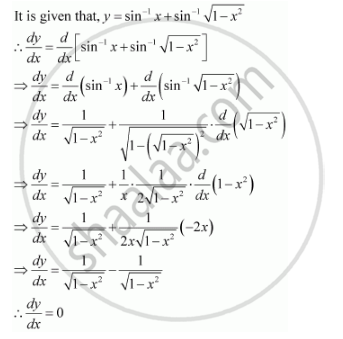



Find Dy Dx If Y Sin 1 X Sin 1 Sqrt 1 X 2 0 X 1 Mathematics Shaalaa Com




If X2 Y2 2 Xy Find Dy Dx Mention Each And Every Step Mathematics Topperlearning Com Gwvwfskk



What Is The Value Of Dy Dx If Y Tan 1 4 X 1 4x Quora




If Y X 1 X Show That 2x Dydx Y 2 X
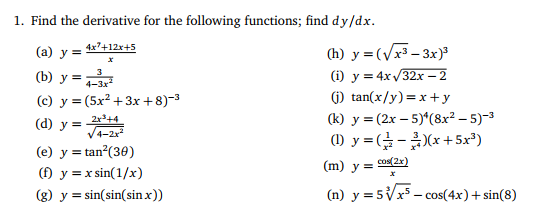



Find The Derivative For The Following Functions Find Chegg Com
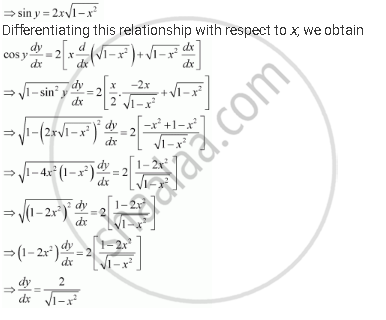



Find Dy Dx For Y Sin 1 2xsqrt 1 X 2 1 Sqrt2 X 1 Sqrt2 Mathematics Shaalaa Com




Differentiate The Function With Respect To X Sqrt X 1 X 2 X 3 X 4 X 5 Mathematics Shaalaa Com




Find Dy Dx Y X X 1 X Brainly In



If Y X 2 1 Log 1 X 1 1 X 2 Find Dy Dx Sarthaks Econnect Largest Online Education Community




Ex 2 Differentials Determine Dy Given X And Dx Youtube




Find Dy Dx If Y X 1 X 2




Ex 5 3 5 Find Dy Dx In X2 Xy Y2 100 Class 12



Q Tbn And9gcq9arl5ab K Kkztqdma6czzlslnfprp6ljv7o6a18 5qqda4yy Usqp Cau




Find Dy Dx In The Following Y Tan 1 3x X 3 1 3x 2



Www Colorado Edu Amath Sites Default Files Attached Files Appm134spring15exam3 Sol Pdf




If Y Log X Root X2 1 Then Prove That X2 1 Dy Dx X Dy Dx 0 Brainly In




Ex 5 3 14 Find Dy Dx In Y Sin 1 2x Root 1 X2 Cbse




Y Tan 1 5x 1 3 X 6x 2 Find Dy Dx Youtube




Differentiate The Function Y 3x 1 5 2 Chegg Com



If X Y Y X What Is Dy Dx Quora




1 If Y Sqrt X 2 1 Log 1 X Sqrt 1 1 X 2 Find Dy Dx 2 Find The Equation Of Tangent To The Curve Y Sqrt 4x 2 Which



1




Find Dy Dx For The Given Function Y X 1 X 2 X Brainly In




If Y Sinx 1 Cosx Find Dy Dx Brainly In




Example 33 Find Dy Dx If Y X X Y X X A B Teachoo




If Y 1 Sqrt A 2 X 2 Find Dy Dx




Solve 1 X 2 D 2y Dx 2 X Dy Dx Y X 1 X 2 3 2 Mathematics 2 Question Answer Collection




Solved Find Dy Dx By Implicit Differentiation Xy




Implicit Differentiation Advanced Example Video Khan Academy




If Y Log Sin X Find Dydx
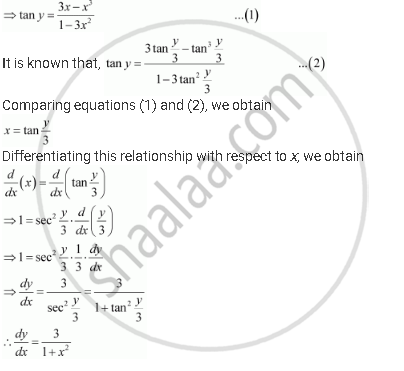



Find Dy Dx For Y Tan 1 3x X 3 1 3x 2 1 Sqrt3 X 1 Sqrt3 Mathematics Shaalaa Com



Find Dy Dx Of X T 1 T And Y T 1 T Expressed In Parametric Form Studyrankersonline



3 8 Implicit Differentiation Calculus Volume 1



If A A X Find Dy Dx Quora



Q Tbn And9gcq69xqaiwgxy95 44f5sqsm2pnlgxvor Roue6xadfczqpkv4qx Usqp Cau



If Y Cos 1 2x 3 1 X 2 13 Then Find Dy Dx Sarthaks Econnect Largest Online Education Community
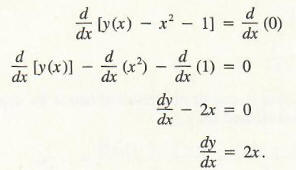



Find A Derivative With Step By Step Math Problem Solver




Find Dy Dx For Y X 3 Squareroot X 1 A 3x 2 2 Chegg Com
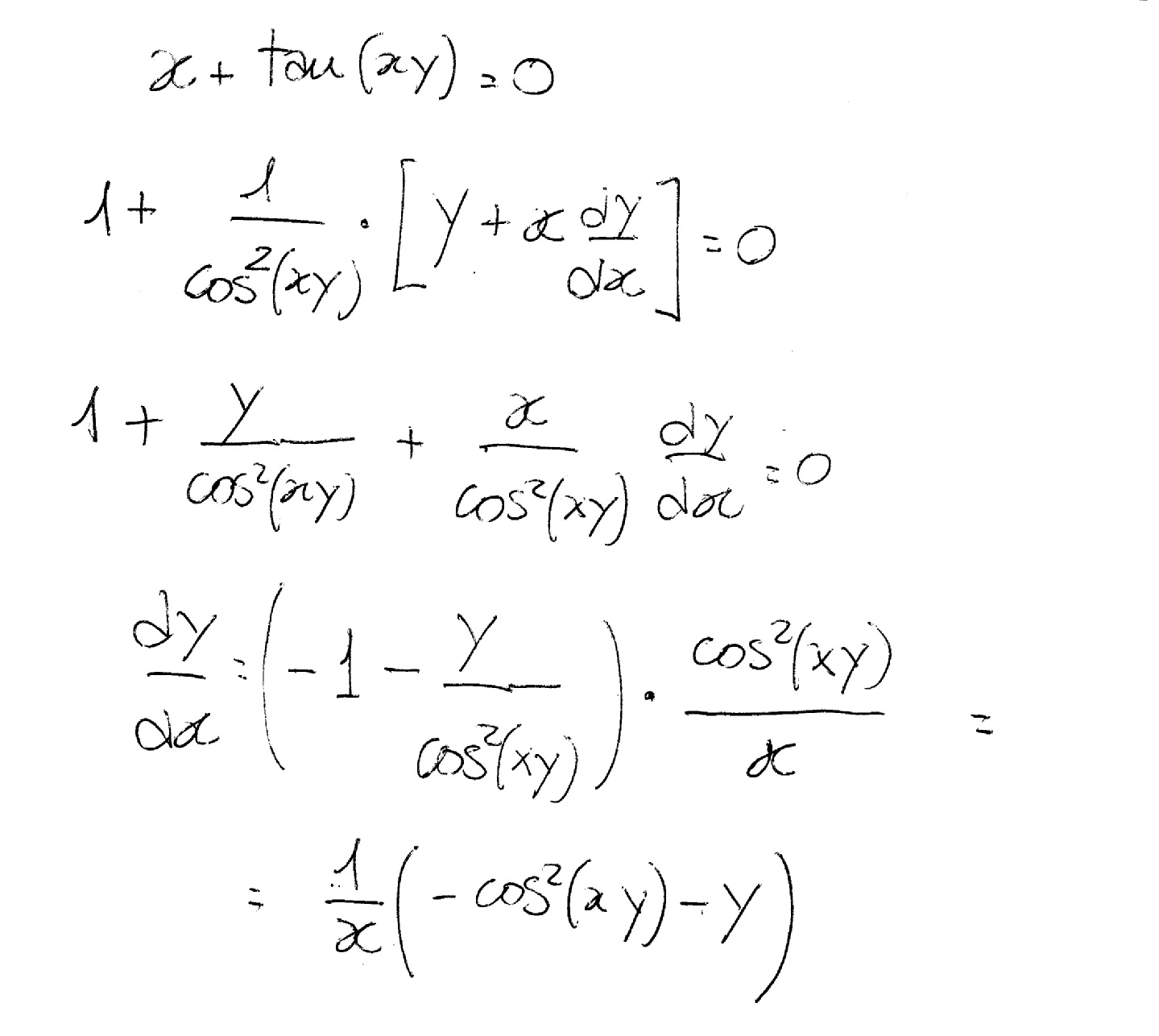



How Do You Find Dy Dx If X Tan Xy 0 Socratic



If Y F 2x 1 X 2 1 And F X Sinx 2 Can You Find Dy Dx Quora




If Y Sqrt X 1 Sqrt X Then Dy Dx At X 1 Is Equal To Youtube




Differentiating Related Functions Intro Video Khan Academy
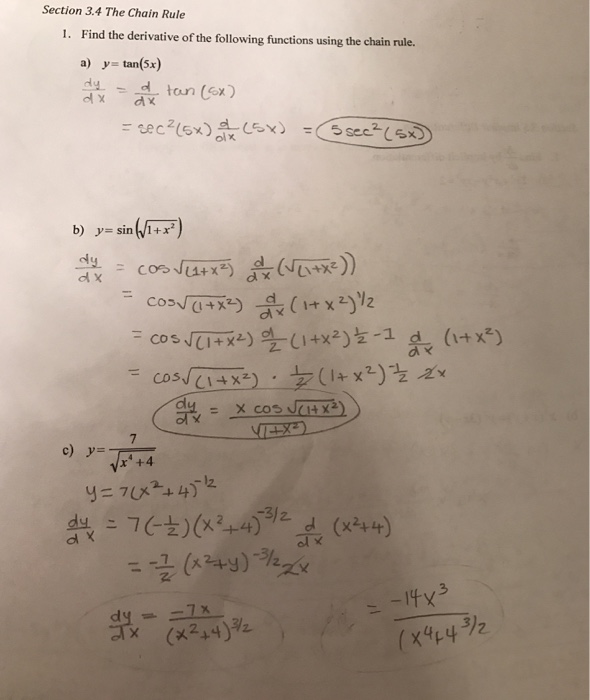



Find The Derivative Of The Following Functions Using Chegg Com
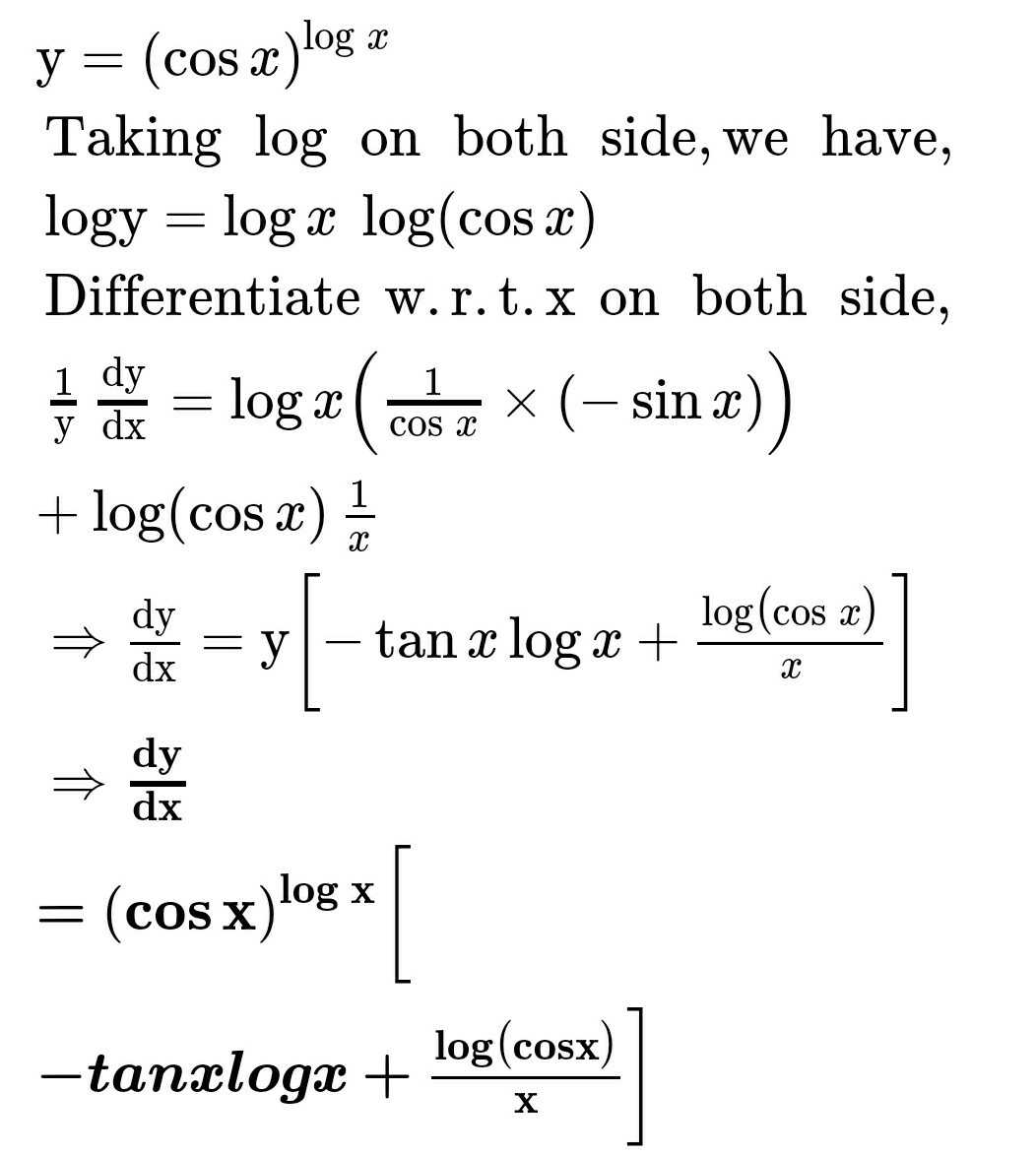



Y Cos X Log X Find Dy Dx Scholr




If Y Cot 1 Sqrt 1 X 2 1 X Then Find Dy Dx




Worked Example Differentiating Related Functions Video Khan Academy
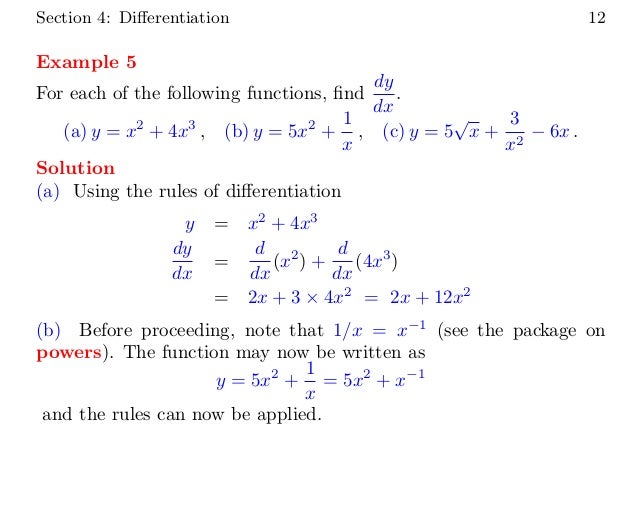



15 Differentiation L1



What Is The Derivative Of X Xy Y 1 Quora




Derivatives As Dy Dx




Implicit Differentiation
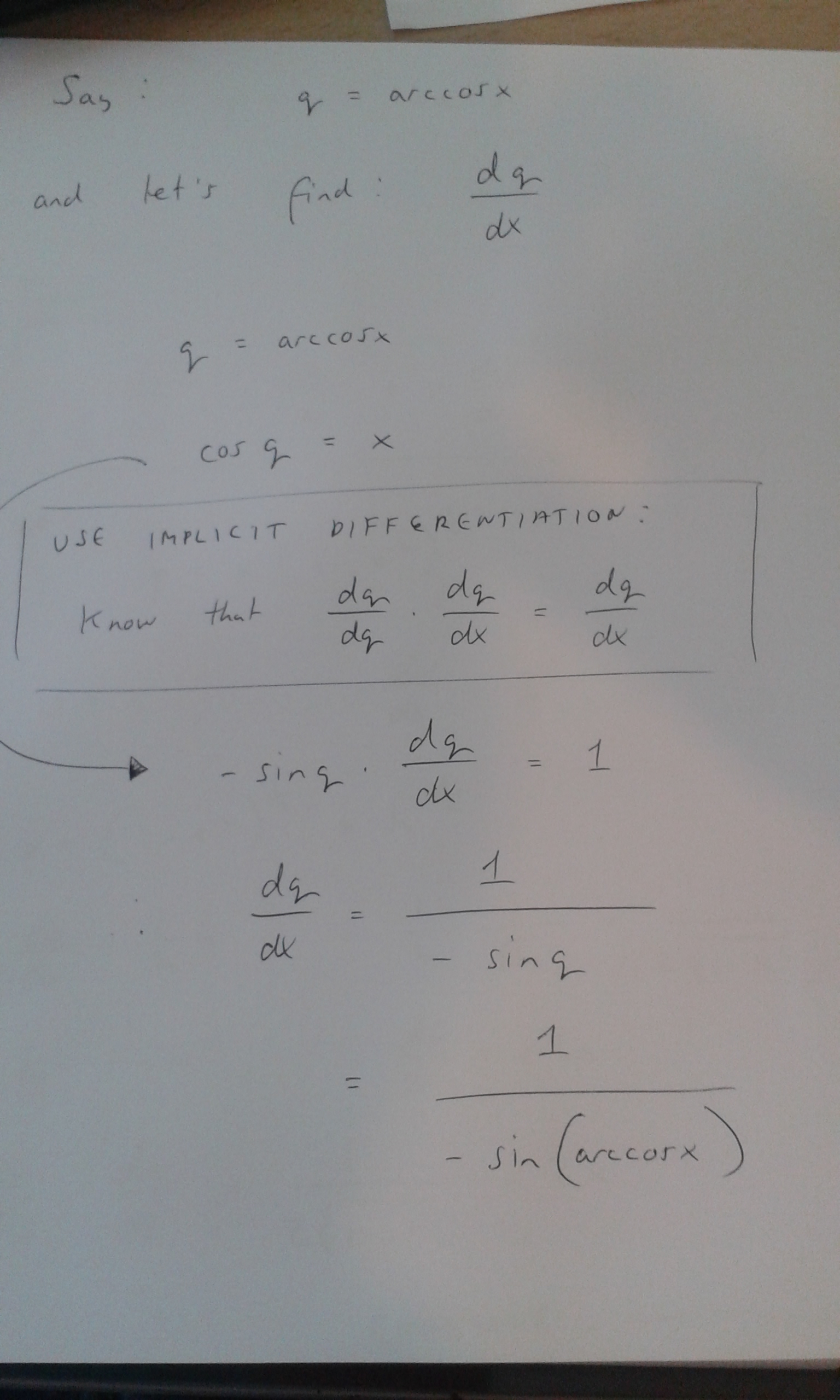



How Do You Differentiate Y Arccosx X Sqrt 1 X 2 Socratic




If Y Log X 2 X 1 X 2 X 1 2 Sqrt 3 T A N 1 Sqrt 3 X 1 X




Ex 5 3 10 Find Dy Dx In Y Tan 1 3x X3 1 3x2 Ex 5 3



3 2 The Derivative As A Function Calculus Volume 1




Rd Sharma Solutions For Class 11 Maths Updated 21 22 Chapter 30 Derivatives Download Free Pdf



5 Derivative Of The Logarithmic Function




Find Dy Dx Y X X 1 X Brainly In



Secure Media Collegeboard Org Digitalservices Pdf Ap Ap16 Calculus Ab Q4 Pdf
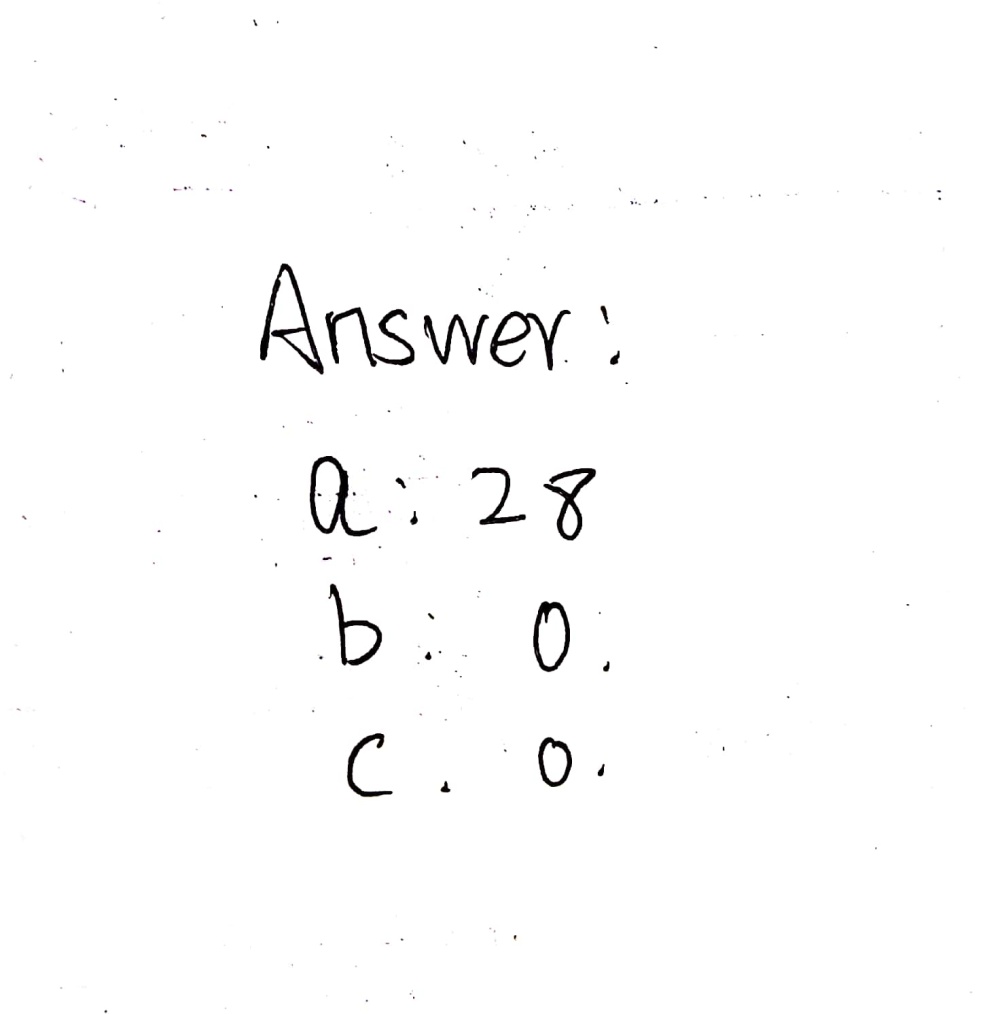



8 Find Dy Dx Of The Following Functions A Y Gauthmath




If Y Cos 1 1 X 1 X Then Find Dy Dx Youtube




If Y X X2 1 1 2 M Then Show That X2 1 D2y Dx2 X Dy Dx M2y 0 Mathematics Topperlearning Com 6jd9kell
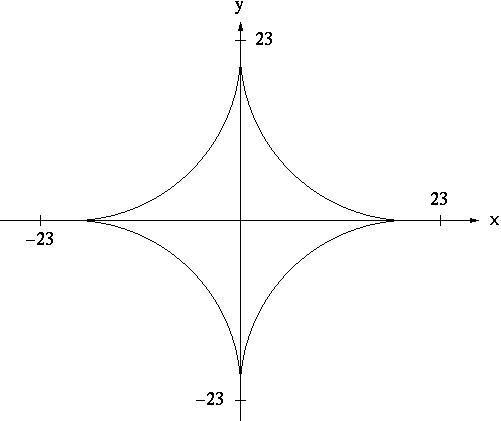



Implicit Differentiation




If Y X 2 2x 3x 4 Then Find Dy Dx



Solve The Following Differential Equation 1 X 2 Dy Dx Y Tan 1x Sarthaks Econnect Largest Online Education Community




If X 1 Y Y 1 X 0 Then Prove That 1 X 2 Dydx 1 0




Q8 If X 2 A 2 Y 2 B 2 1 Find Dy Dx Implicit Function If X Square A Square Y Square B2 Youtube




Iit 19 Find Dy Dx If Y F 2x 1 Square X 1 And F X Sin Square X Youtube




Ex 5 5 2 Differentiate Root X 1 X 2 X 3 X 4 X 5



Find Dy Dx If Y Xtanx X2 1 2 Studyrankersonline



Secure Media Collegeboard Org Digitalservices Pdf Ap Ap16 Calculus Ab Q4 Pdf
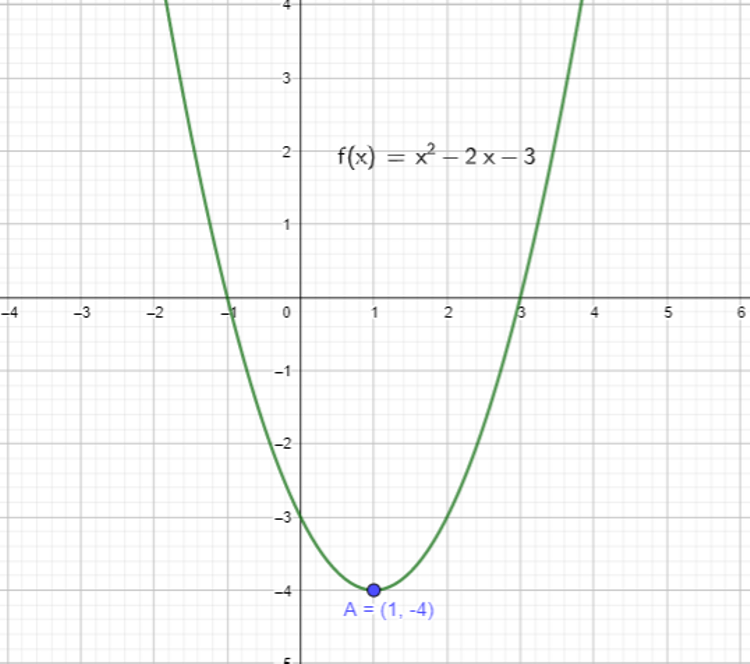



Basic Differentiation Tutorial For Igcse And A Level Maths Vivax Solutions



If Y Cos 1 2x 3 1 X 2 13 Then Find Dy Dx Sarthaks Econnect Largest Online Education Community
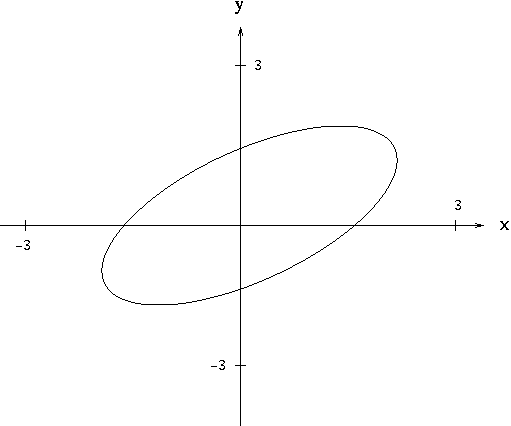



Implicit Differentiation
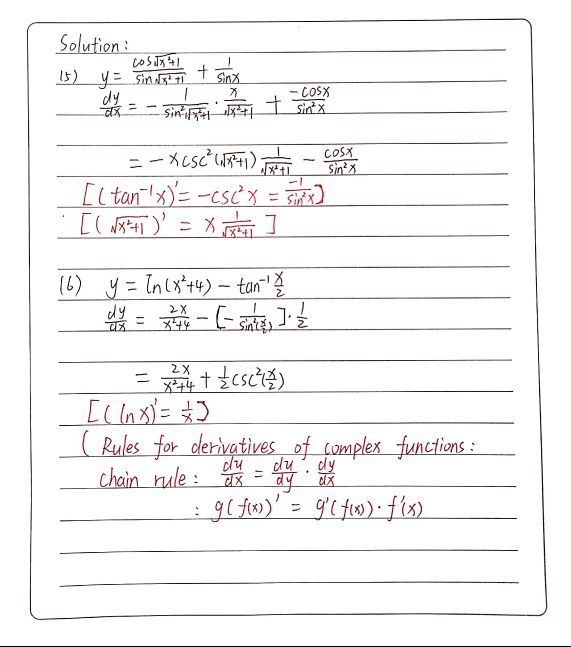



X 1 Square Root Of X2 2x 5 5 Find Dy Dx For Y T Gauthmath



How To Find Dy Dx Of The Function Y X 1 X 2 X 1 2 Quora
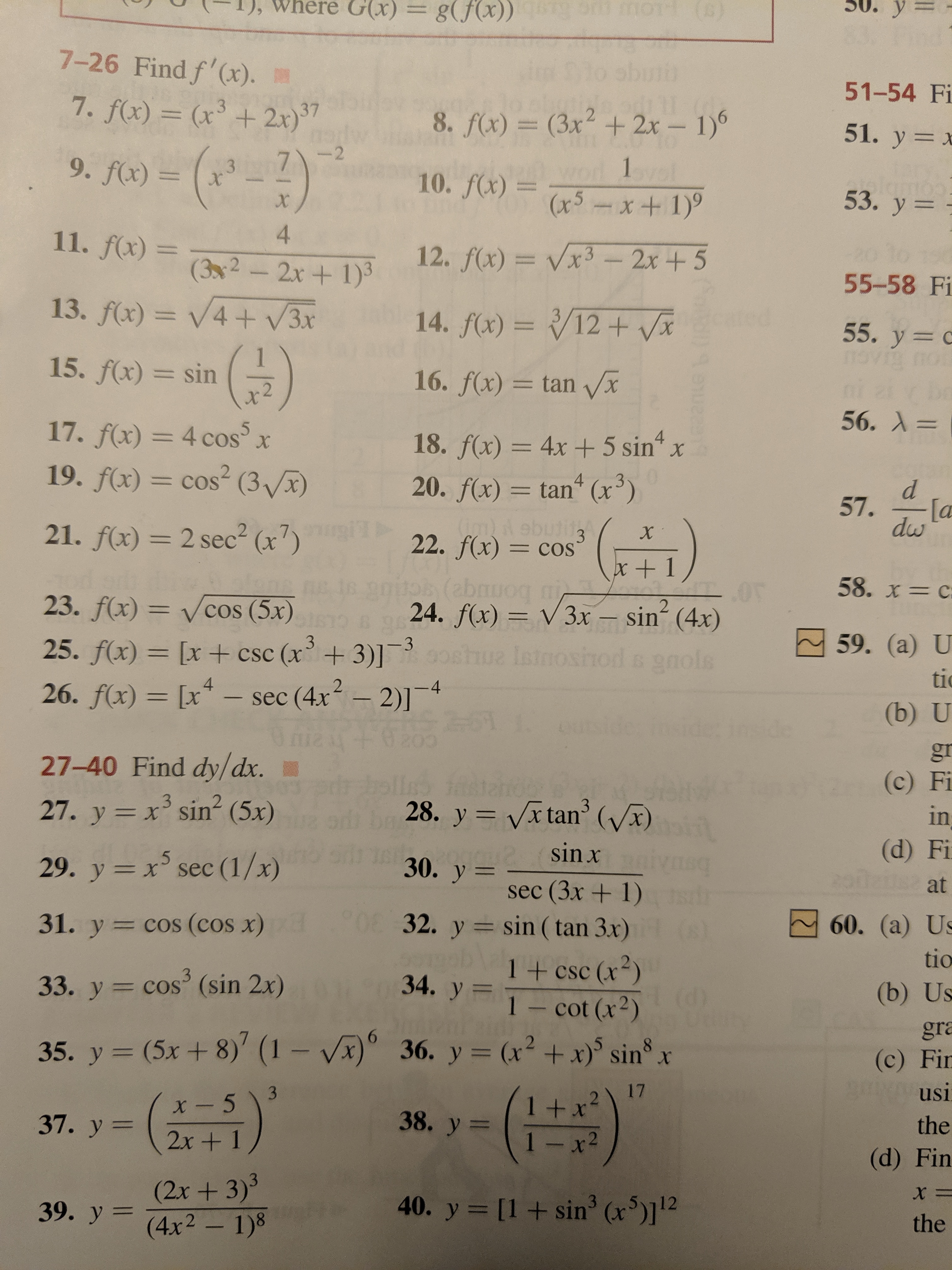



Answered G X U G Fx 00 O 7 26 Find F X Bartleby
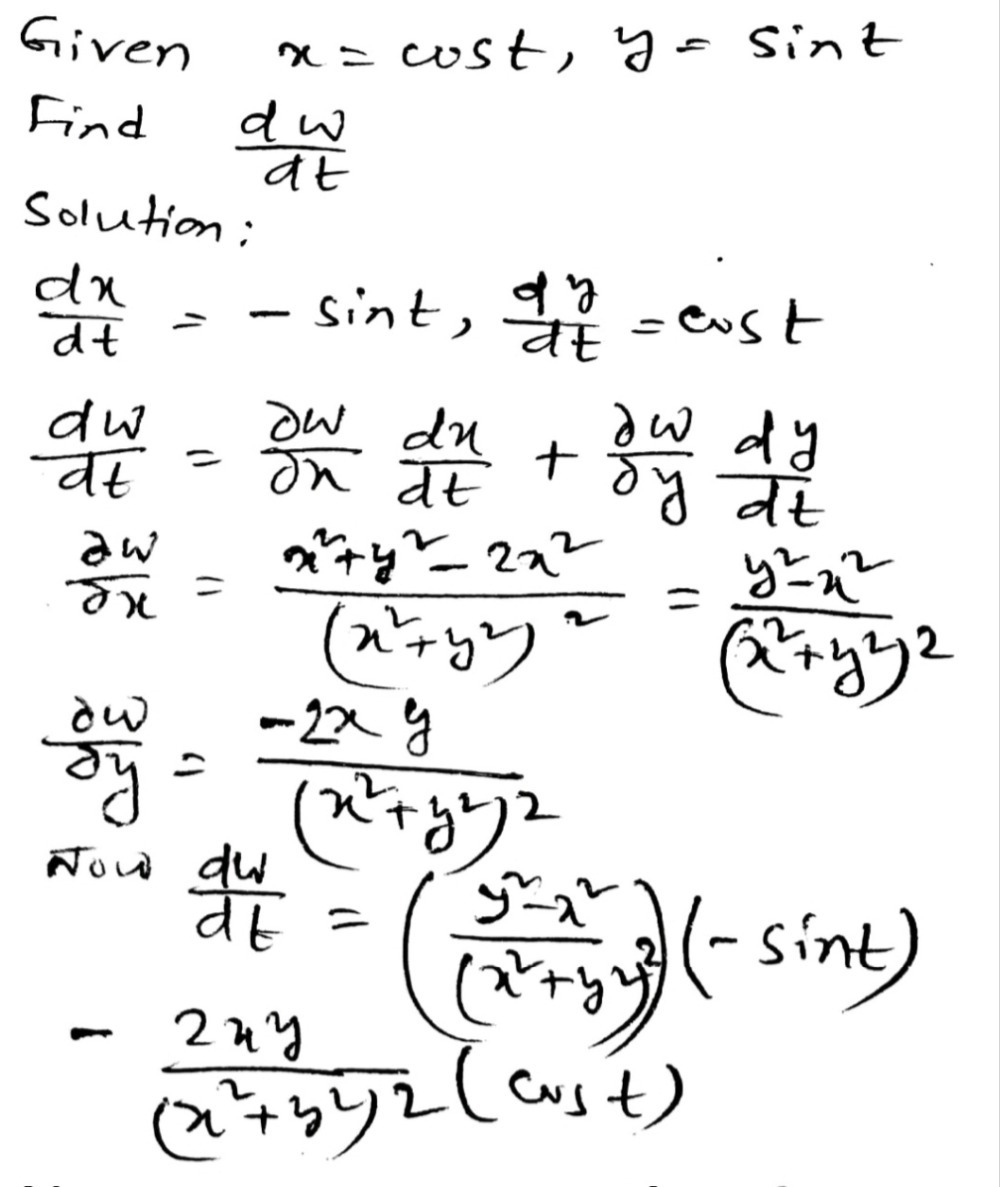



A Find Dy Dx Of The Following Function Y X Squar Gauthmath



コメント
コメントを投稿